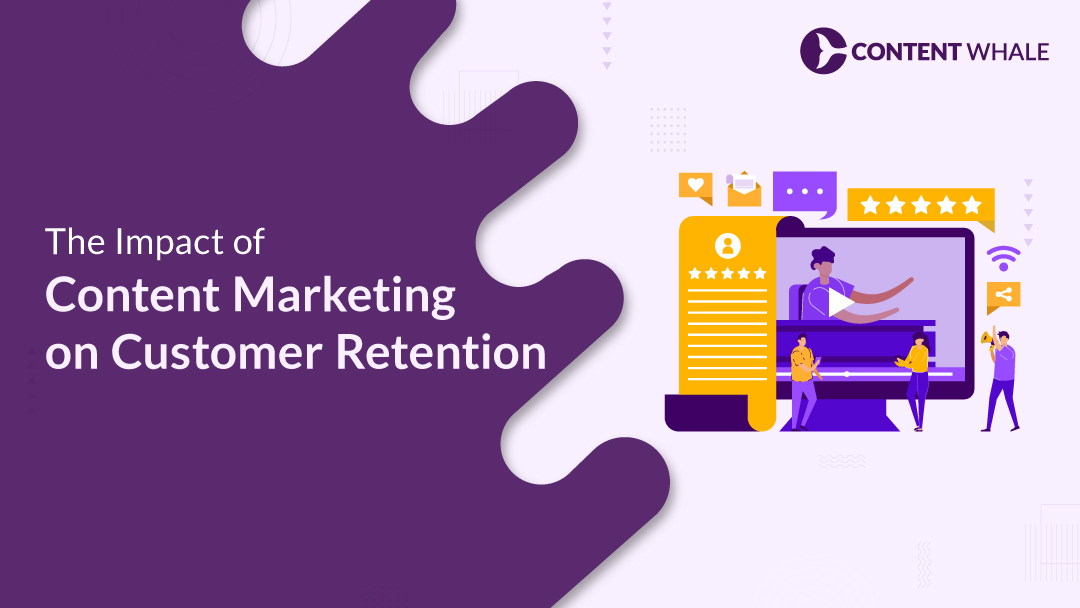According to McKinsey, the global SaaS market is currently valued at approximately $3 trillion, a figure that is expected to skyrocket to $10 trillion by 2030—just five years from now. These numbers not only reflect the remarkable growth SaaS has experienced in the past decade but also paint a promising picture for the future.
With growth, however, comes competition. More and more, we are seeing more SaaS products come to the market, and it has become increasingly challenging to stand out amidst the barrage of new and innovative products.
Content marketing is not just a strategy but a solution for a SaaS company to address unique challenges in the industry. These challenges include long sales cycles, complex products, and the need for strong customer retention.
With that, let’s go over some actionable strategies for enhanced content marketing that you can use in 2025.
Understanding the SaaS Content Marketing Landscape
Like any technology-leaning industry, the SaaS market is constantly changing—with any related trends and challenges also rapidly evolving. Let’s look at a few trends to pay attention to in the short term.
Key Trends in 2025
- Personalization with AI
AI tools allow for highly tailored content experiences such as personalized recommendations, dynamic email campaigns, and adaptive landing pages. SaaS marketers benefit from using AI to create content that resonates with individual users on a more personal level.
- Video Content
Video content continues to dominate many areas of the online space and is especially beneficial for explaining complex SaaS products. Bite-sized tutorials and demo videos can be highly effective marketing tools.
- Thought Leadership
SaaS companies can establish authority by publishing in-depth content that showcases their expertise, such as industry insights, research reports, and opinion pieces. This positions the brand as a trusted voice, instilling confidence in potential customers.
- Customer-centric Experiences
Customers expect SaaS content to address their pain points directly. This involves not just creating resources but creating value-driven resources like troubleshooting guides and ROI calculators.
- Microlearning for Onboarding
SaaS companies are not embracing microlearning techniques—short, digestible lessons that simplify onboarding and feature adoption for entire teams.
Challenges SaaS Companies Face
Part of knowing what strategies to use with content marketing is understanding what challenges you’ll need to overcome. As a growing, fairly novel industry, any SaaS company can face unique challenges.
- Crowded Market
The SaaS market is highly saturated with new players that are regularly emerging. Although you could argue that SaaS is not a market and that any industry can develop a SaaS solution—which is true—it’s still challenging to pierce any industry where new SaaS businesses are constantly cropping up.
Standing out in a saturated market entails delivering exceptional content that provides unique value to your audience.
- Complex Products
The inherent complexity of SaaS solutions can also prove to be a challenge. SaaS products often involve technical features that may be challenging to explain in simple terms—making it more difficult to reach a wider crowd.
Crafting clear and engaging content that breaks these complexities into bite-sized pieces is a challenging but crucial aspect of SaaS Content Marketing.
- Varied Audience Needs
SaaS audiences often include multiple personas like technical teams, decision-makers, and end-users. Each type of user requires a different kind of content, making content marketing challenging when reaching a broad audience.
For instance, a decision-maker like an executive might need ROI-focused content, while end-users like staff will need tutorials for the product. This requires creating content for various groups of users, thus resulting in a greater effort to curate content.
Software development services help SaaS businesses create solutions that address the specific needs of different audience groups, such as executives, technical teams, and end-users. These services ensure software functionality matches audience requirements, improving workflows, engagement, and customer retention.
- Customer Retention
The nature of SaaS products entails customer retention being just as important as acquisition. Without repeat customers consistently supporting a product, a SaaS business would not be sustainable.
Ensuring that content supports onboarding and continued engagement is critical to reducing churn.
Actionable Strategies for SaaS Content Marketing
Value-Driven Blog Content
Blogs were the foundation of content marketing before the social media boom. Even today, blogs remain foundational to SaaS content marketing, giving your product promotion without overtly advertising what you sell.
Blog content serves customers in a way that addresses their challenges and offers solutions in a more subtle manner.
For example:
- A tutorial on “How to Reduce Customer Churn with Automation Tools.”
- Industry comparisons like “Top 5 Collaboration Tools for Remote Teams.”
- Success stories showcasing how a SaaS product can solve a real-world problem.
Value-driven content like the above-mentioned makes potential customers feel seen and understood, setting up the stage for potential customer acquisition.
To execute blog content well, you have to:
- Research keywords specific to your niche using tools like Ahrefs or SEMrush.
- Structure content for easy readability using headings, bullet points, and visuals.
- Include stone calls-to-action that guide readers to learn more about your product or sign up for your newsletter.
Video Marketing
Video marketing is perhaps now one of the best ways to engage an audience. Because videos are inherently engaging and stimulating, they are the perfect vehicle for simplifying complex SaaS features.
For example:
- Quick-start guides explaining key features of your SaaS product.
- Animated explanations showcasing how your software works.
- Video testimonials from satisfied customers.
With everybody being on their phone most of the time, businesses can truly benefit from engaging users through video marketing, not only in educational content but with promotional videos as well pushed through social media sites.
Here are some steps you can take for video marketing:
- Use platforms like Loom or Canva to create professional videos without too high of a cost
- Distribute videos on YouTube or TikTok to reach a wider audience.
- Add captions to ensure accessibility and improve SEO.
“Freemium” Content
Freemium content means free, high-value resources like eBooks, templates, or reports that can attract potential customers and generate leads.
For example:
- Giving away a free SaaS Marketing Plan Template
- Releasing industry benchmarks like “2024 SaaS Trends Report”
Giving access to these free resources can help a SaaS business connect better with its audience. To further improve execution, make sure to:
- Gate content behind a lead capture form—only releasing the content when they sign up for your brand’s newsletter or a similar mechanism.
- Ensure the content is well-designed and actionable, something your audience will want to reference repeatedly.
- Use design tools to create professional designs.
Community Engagement
Creating a space where users can interact can be immensely beneficial for a SaaS product. This space can be where users interact, share experiences, and learn from other users.
For example:
- A LinkedIn group for SaaS professionals.
- Webinars on solving industry-specific challenges with your SaaS solution.
- A discord community for users.
Here are a few tips for execution:
- Regularly post fresh, relevant topics to spark discussions.
- Be an active participant in the community, not just a moderator
- Offer exclusive perks to members, like early access to features or special events.
Of course, make sure that in dedicating time to create these communities, you are also spending time moderating them to ensure no negative behavior is tolerated. Communities can be great, but they do need to be supervised and moderated to retain their quality.
SEO for SaaS
SEO is still relevant in content marketing, especially if you want to reach a wider group of people. SEO helps your business rank higher in search results, driving organic traffic to your site.
For example:
- Target queries like “best CRM for small businesses” or “how to track team productivity.”
- User pillar and cluster strategies to create interconnected content
Of course, make sure your SEO strategies align with your organization’s overarching goals and ensure there is synergy across your various marketing efforts. Here are a few tips for using SEO for SaaS:
- Conduct keyword research related to your SaaS product using tools like SEM rush or Google’s Keyword Planner
- Focus on creating high-quality content that satisfies user intent.
- Optimize metadata, alt tags, and internal links for better ranking.
User-Generated Content (UGC)
UGC is content created by users that can increase the perception of authenticity and trust in your brand.
For example:
- Customer reviews shared on social media
- Testimonies from real customers
- User-submitted case studies or blog posts
You can invest in UGC by creating incentives for users to contribute, such as discounts or free upgrades. Featuring UGC on your website and promotional materials can also help with authentic promotion.
Retention Over Acquisition
Retention is absolutely just as important as acquisition for a SaaS product. Retaining customers is often more profitable than acquiring new ones, especially in the SaaS space. Content should, therefore, support ongoing use and customer satisfaction.
For example:
- Onboarding tutorials to help users get started
- Regular newsletters sharing new features, tips, and best practices
- In-app tooltips to guide users while they’re using the app.
To do so, your team can use in-app messages and gather feedback through surveys or user interviews.
Measuring the Effectiveness of Your SaaS Content Marketing
Measuring the effectiveness of your SaaS content marketing strategy is critical for understanding what works, optimizing performance, and driving growth. To do so, you can measure metrics like:
- Website traffic and traffic sources
- Bounce Rates
- Time spent on a page
- Scroll depth
- Conversion rate
- Cost per lead
- Customer retention rate
- Content marketing ROI
Among many others. Paying close attention to measurable results allows your content marketing team to adjust and make iterations on their current process if necessary. Knowing where things went right or wrong is integral to growing and improving your product.
Final Thoughts
Content marketing has become more than just a supplementary marketing tactic and has become the backbone of sustainable growth and customer engagement. Even in 2024, the landscape is evolving rapidly, with personalization, video content, and customer-centric strategies taking center stage.
By prioritizing actionable, value-driven content, SaaS businesses can not only attract and convert leads but also nurture long-term relationships with their customers.
It is key to remember that successful content marketing hinges on understanding your audience and addressing their specific needs at each stage of the buyer journey. Whether you’re utilizing SEO, creating engaging videos, or building a community, each piece of content should serve a clear purpose to drive measurable results.
In doing so, you can position your brand not just as a service provider but as a trusted partner in your customers’ success.





